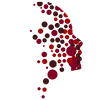In some cases, after proper identification of the nature or major causes of the dysphagia, it may be determined that the best interventions may involve further surgery or additional medical intervention. Esophageal dilation of an area of stricture or stenosis within the esophagus is a common technique used in this population although its success can vary greatly and is impacted by many factors. These can be more thoroughly discussed with your physician if this becomes a viable consideration.
What is important to consider is that, in many cases, a combination of interventional approaches described above can often be used to allow for the best outcomes. Adequate evaluation and identification of the nature of the dysphagia will assist in guiding clinicians to the interventions that will be most appropriate in each individual case.
What is important to consider is that, in many cases, a combination of interventional approaches described above can often be used to allow for the best outcomes. Adequate evaluation and identification of the nature of the dysphagia will assist in guiding clinicians to the interventions that will be most appropriate in each individual case.

